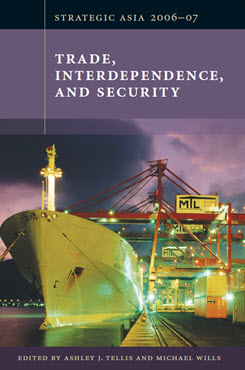Strategic Dimensions of Economic Interdependence in Southeast Asia
This chapter examines the evolving geo-economic environment in Southeast Asia, particularly the rise and high visibility of China, and the implications for U.S. economic, political, and security interests in the ASEAN region.
EXECUTIVE SUMMARY
This chapter examines the evolving geo-economic environment in Southeast Asia, particularly the rise and high visibility of China, and the implications for U.S. economic, political, and security interests in the ASEAN region.
MAIN ARGUMENT
Despite the growth in influence of the PRC in the region, Japan, the EU, and the U.S. are still major economic partners of ASEAN and the U.S. is the grouping’s most important security partner. ASEAN is constructing a hub and spoke system of multiple ASEAN+1 connections in which both Washington and Beijing are important in a regional distribution of power that can promote the interests of China, the U.S., and ASEAN.
POLICY IMPLICATIONS
- Building the ASEAN-U.S. Enhanced Partnership will act as a balance to China. To be successful, the partnership will require moving beyond economic relations in the building of functional links to promote greater multilateral political interdependencies in the region.
- The Enhanced Partnership’s economic strategy of building a regional network of free trade agreements will require the reauthorization of the U.S. president’s fast track trade authority in 2007.
- The key bilateral relationship for the U.S. in ASEAN is with Indonesia. Continued U.S. support of the Yudhoyono government’s efforts at reform and development will provide further substance to what the U.S. now defines as its “strategic partnership” with Indonesia. A strong Indonesia has the potential once again to lead ASEAN.
- The economic and security platforms supporting U.S. strategic interests in Southeast Asia are stable. The political platform needs shoring up with respect both to formal U.S. association with ASEAN’s Treaty of Amity and Cooperation (TAC) and to U.S. differences with ASEAN over issues of democratization and human rights in Burma.
Strategic Asia
The Strategic Asia annual edited volume incorporates assessments of economic, political, and military trends and focuses on the strategies that drive policy in the region. Learn more about Strategic Asia.


